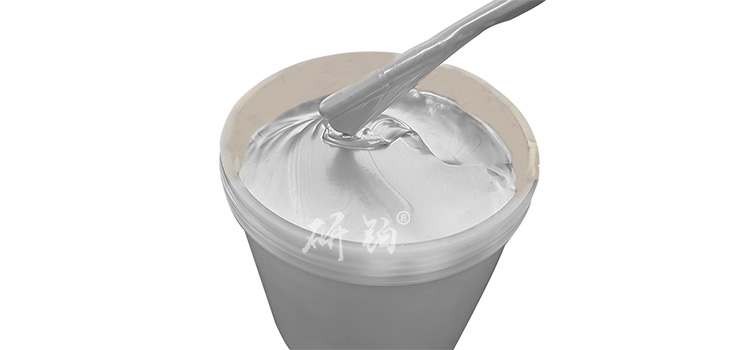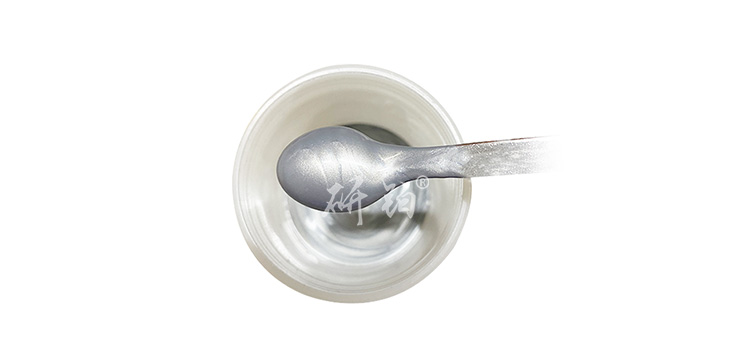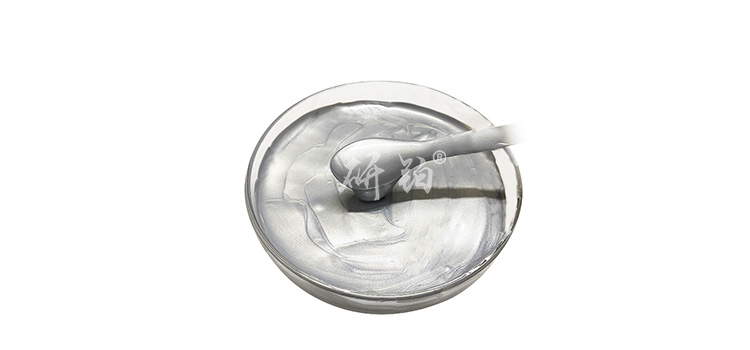

Hotline:0755-22277778
Tel:0755-22277778
Mobile:13826586185(Mr.Duan)
Fax:0755-22277776
E-mail:duanlian@xianjinyuan.cn
With the global shortage of resources and the increasing attention to environmental protection issues, solar energy has received widespread attention and utilization due to its advantages such as cleanliness, safety, and resource adequacy, among which crystalline silicon solar cells have developed the most rapidly.silver pasteAs one of the extremely important raw materials in solar cell modules, it is mainly composed of silver powder, glass powder, organic carrier, and additives. The composition of silver paste will affect the mechanical properties of silver film and the microstructure of Ag/Si contact interface. Among them, silver powder serves as a conductive functional phase, and its sintering quality directly affects the output of current, as well as the physical and mechanical properties of the silver film.
Silver powder inConductive silver paste for solar cellsThe proportion of 70% to 90% of the mass is the key factor determining the performance of silver paste and the formation of silver electrodes. The solar positive electrode grid line is very narrow, and the silver powder particle size is too large to pass through the screen during printing, which will affect the electrical performance of the battery. Silver powder with small particle size is difficult to increase the silver content of the silver paste and is not easily wetted by organic carriers, resulting in decreased printability. After sintering, the silver film shrinkage rate is large and the density is poor. At present, the silver paste on the front of solar cells is made of ultrafine spherical silver powder at the micron/submicron level. However, in terms of the morphology of silver powder, the volume resistivity of flake silver powder of the same quality is smaller than that of spherical silver powder. Moreover, flake silver powder is arranged in a flake structure, with good flowability between particles, which is more conducive to the sintering and densification of silver paste, and has better conductivity. Yan Fangcun et al. found that the addition of flake silver powder can improve the electrical properties of the silver film, and the square resistance is significantly reduced compared to spherical silver powder. Lin Chen believes that flake silver powder can replace spherical ultrafine spherical silver powder in the preparation of silver paste, conductive adhesive, and medium low temperature conductive paste for solar cells. Wei Yanbiao et al. studied the effect of flake silver powder on the properties of sintered conductive silver paste, and the results showed that adding an appropriate amount of flake silver powder can improve the adhesion to a certain extent. Therefore, adding an appropriate amount of flake silver powder to spherical silver powder can help improve the performance of silver paste.
1.1 Preparation of Conductive Silver Paste
This experiment uses spherical silver powder, flake silver powder Preparation of lead-free glass powder from Bi 2 O 3-B 2 O 3-SiO2-Al 2 O 3 system and organic carrier from turpentine alcohol ethyl cellulose system by mixing, stirring and rolling 1-3 times for solar cell useConductive silver pasteThe particle sizes of silver powder and glass powder used are shown in Table 1. Print silver paste onto a silicon substrate through a 300 mesh screen, let it flow naturally for 5-10 minutes, dry it at 200 ℃, hold it for 5-15 minutes, and finally sinter it at 850 ℃ for 40 seconds to obtain a silver film.
1.2 Performance testing
Use a scraper fineness meter to test the fineness of silver paste, observe the sample morphology using XL30ESEM-TMP SEM, and determine the square resistance using the national standard GB/T 17473.3-2008.
2.1 The influence of silver powder particle size on the properties of silver film
Preparation of spherical silver powder with average particle sizes of 0.1, 2, and 4 μ m mixed with 5% glass powder and 15% organic carrier, respectivelyConductive silver pasteAnd test its silver film resistance.
When the silver powder is spherical, the square resistance of the conductive silver film first decreases and then increases with the increase of the average particle size of the silver powder. Silver film resistance is mainly composed of three parts: internal resistance of silver powder, tunneling resistance, and contact resistance of silver powder. At the same addition amount, spherical silver powder with an average particle size of 0.1 μ m has a smaller particle size, and the contact area between silver powder particles with smaller particle size is relatively small. The electron travel distance inside the particle is short, and the number of electron tunneling times is significantly increased, resulting in relatively high contact resistance and tunneling resistance. Therefore, the square resistance is large and the conductivity is poor. Spherical silver powder with an average particle size of 2 μ m has a moderate particle size, low contact resistance and tunneling resistance, resulting in a small square resistance value and good conductivity. However, when the average particle size of spherical silver powder is 4 μ m, its square resistance sharply increases, which may be due to the large and numerous gaps between silver particles caused by excessive particle size, which cannot form effective contact, resulting in a smaller contact area and poorer conductivity.
In addition,silver pasteDuring the sintering process, the glass phase with a lower softening point melts first, and the glass liquid infiltrates and envelops the silver particles, causing them to disperse and drive the rearrangement of silver powder. During the cooling process, the silver particles will recrystallize on the silicon substrate, forming a dense conductive network that gives the silver film good conductivity. When the selected silver powder particle size is too small, the larger surface energy may cause the silver powder to agglomerate, resulting in fewer silver particles dissolved in the glass solution during sintering, and less recrystallized silver, thereby reducing the conductivity of the silver film. But if the silver powder particle size used is too large, the large silver particles are not easily dissolved in the glass liquid during the extremely short sintering process, which will also reduce the number of recrystallized particles and affect the conductivity of the silver film. Therefore, the particle size of silver powder needs to be controlled within a suitable range in order to achieve good conductivity.
2.2 The influence of particle size and morphology of mixed silver powder on the properties of silver film
The particle size and morphology of silver powder have a significant impact on the conductivity of silver film. It is considered to prepare silver paste by mixing silver powder with different particle sizes and morphologies, and to study the changes in the conductivity of silver film under different combination forms.
As the particle size of spherical silver powder increases, the silver film resistance of silver paste A, silver paste B, and silver paste C after sintering first decreases and then increases. Only when the flake silver powder and spherical silver powder are in an appropriate particle size combination, the contact between conductive phase particles is tighter, forming a denser conductive network, and the silver film has lower resistance and better conductivity. The square resistance test results of silver paste D and silver paste E show that their square resistance is greater than that of silver paste B. This is mainly due to the addition of flake silver, which increases the effective contact area of conductive phase particles, in addition to point contacts between spherical silver powder particles, as well as line to line or line to surface contacts between flake silver powder particles; And spherical silver powder can effectively fill the gaps that occur when the flake silver powder overlaps with each other, which also enhances the conductivity.
In summary, the conductivity of slurry B is good,Silver filmThe square resistance is relatively small, forming a dense conductive network with excellent conductivity.
2.3 The influence of silver content in silver powder on the properties of silver film
Due to the superior conductivity of the silver film when mixed with 2.0 μ m spherical silver powder and flake silver powder, a combination of 2.0 μ m spherical silver powder and flake silver powder was selected to investigate the effect of the relative addition amount of these two silver powders on the conductivity of the silver film.
The square resistance of the sintered silver film first decreases and then sharply increases with the increase of silver content. When all the silver powder used is pure spherical silver powder, the square resistance is 4.44 m Ω/□; With the addition of flake silver powder, the square resistance continuously decreases. When the content of flake silver powder continues to increase to 50%, the square resistance reaches the minimum value of 3.92 m Ω/□. Continue to increase the content of flake silver powder to prevent a sharp increase in resistance; When the content of flake silver powder is 60%, the square resistance value is 4.69 m Ω/□. If all flake silver powder is used, its square resistance value is 5.26 m Ω/□.
The change in square resistance indicates that the addition of flake silver powder can significantly reduce the square resistance. The contact between spherical silver powder particles is point contact between balls, while the contact between flake silver powder particles can form line to line or line to surface contact, greatly increasing the effective contact area of conductive phase particles; andspherical silver powderCan effectively fillFlake silver powdersThe gaps that appear when overlapping can also enhance the conductivity. When the content of spherical silver powder and flake silver powder is appropriate, the contact between conductive phase particles is tighter, and the conductive network formed is denser, thus achieving the best conductive effect. The addition of flake silver powder has a certain range, and not more is better. Due to the high content of flake silver powder, the content of spherical silver powder is relatively reduced. The gaps that appear when the flake silver powders overlap after sintering are not effectively filled by the spherical silver powder, and the conductive network may have faults. The connections between particles are not tight enough to form a dense conductive network. In addition, excessive amount of flake silver powder can deteriorate the flowability of the slurry, seriously affecting the screen printing effect of the slurry and thus affecting the conductivity of the printed film.

During the process of increasing the mass fraction of flake silver powder from 20% to 50%, the surface morphology of the silver film after sintering of the slurry does not show significant changes, and a relatively dense conductive network can be formed. As the content of flake silver powder continues to increase, the flake silver powder is arranged in a flake structure in the slurry, and the contact between flake silver particles is line to line, line to surface, or surface to surface contact. Spherical silver powder can also serve as a bridge between flake silver surfaces, making the contact area between silver particles larger than that of pure spherical silver powder, thereby reducing the square resistance of the silver film and improving its conductivity. When the relative content of spherical silver powder and flake silver powder is within an appropriate range,silver pasteThe flowability of the silver film is better, which will increase the particle flowability, improve the wetting ability of the silicon substrate, and enable it to better spread on the silicon substrate, making the sintered silver film denser and improving the conductivity. So when the silver content is 50%, the conductive network structure of the silver film is relatively dense, and a lower square resistance value can be obtained. At this time, the conductivity of the silver film is better. When the mass fraction of flake silver powder exceeds 60%, the square resistance of the silver film shows a sharp upward trend.

Advanced Institute (Shenzhen) Technology Co., Ltd, © two thousand and twenty-onewww.avanzado.cn. All rights reservedGuangdong ICP No. 2021051947-1 © two thousand and twenty-onewww.xianjinyuan.cn. All rights reservedGuangdong ICP No. 2021051947-2